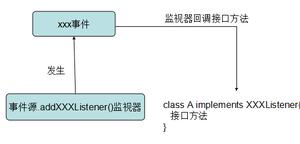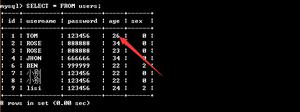如何处理错误“var(x) : 在因子 x 上调用 var(x) 已失效”。在R?
var(x)当我们尝试对因子数据应用数值函数时,会出现错误“调用因子 x 已失效”。
例如,如果我们在数据框中有一个因子列,那么在该列上应用数值函数将导致上述错误。为了解决这个问题,我们可以将as.numeric函数与数值函数一起使用,如下例所示。
示例 1
以下代码段创建了一个示例数据框 -
x<-factor(rpois(20,5))输出结果df<-data.frame(x)
df
创建以下数据框 -
x1 7
2 3
3 7
4 4
5 7
6 6
7 4
8 6
9 8
10 2
11 6
12 6
13 9
14 5
15 3
16 4
17 10
18 2
19 4
20 2
现在,为了对 x 中的数据应用 t 测试,将以下代码添加到上面的代码片段中 -
t.test(df$x,mu=2)输出结果
如果您将上述所有给定的片段作为单个程序执行,它会生成以下输出 -
Error in var(x) : Calling var(x) on a factor x is defunct.
因此,使用类似下面的 ' 来测试常量向量。
'all(duplicated(x)[-1L])输出结果
如果您将上述所有给定的片段作为单个程序执行,它会生成以下输出 -
In addition: Warning message:In mean.default(x) : argument is not numeric or logical: returning NA
现在,在应用as.numeric函数时在 x 上使用t.test函数并将以下代码添加到上面的代码段中 -
t.test(as.numeric(df$x),mu=2)输出结果
如果您将上述所有给定的片段作为单个程序执行,它会为一个样本 t-test 生成以下输出 -
data: as.numeric(df$x)t = 4.3061, df = 19, p-value = 0.0003811
alternative hypothesis: true mean is not equal to 2
95 percent confidence interval:
3.156355 5.343645
sample estimates:
mean of x
4.25
示例 2
以下代码段创建了一个示例数据框 -
y<-factor(rpois(20,2))dat<-data.frame(y)
dat
创建以下数据框 -
y1 1
2 2
3 4
4 4
5 2
6 0
7 0
8 1
9 3
10 0
11 2
12 0
13 0
14 2
15 2
16 2
17 2
18 0
19 4
20 2
现在,为了对数据应用 t 测试,将以下代码添加到上面的代码片段中 -
t.test(dat$y,mu=0)输出结果
如果您将上述所有给定的片段作为单个程序执行,它会生成以下输出 -
Error in var(x) : Calling var(x) on a factor x is defunct.
使用类似以下内容来测试常量向量 -
'all(duplicated(x)[-1L])'输出结果
如果您将上述所有给定的片段作为单个程序执行,它会生成以下输出 -
In addition: Warning message:In mean.default(x) : argument is not numeric or logical: returning NA
现在,在应用as.numeric函数时在 y 上使用t.test函数,将以下代码添加到上面的代码段中 -
t.test(as.numeric(dat$y),mu=0)输出结果
如果您将上述所有给定的片段作为单个程序执行,它会为一个样本 t-test 生成以下输出 -
data: as.numeric(dat$y)t = 8.5446, df = 19, p-value = 6.216e-08
alternative hypothesis: true mean is not equal to 0
95 percent confidence interval:
2.000878 3.299122
sample estimates:
mean of x
2.65
以上是 如何处理错误“var(x) : 在因子 x 上调用 var(x) 已失效”。在R? 的全部内容, 来源链接: utcz.com/z/322606.html








